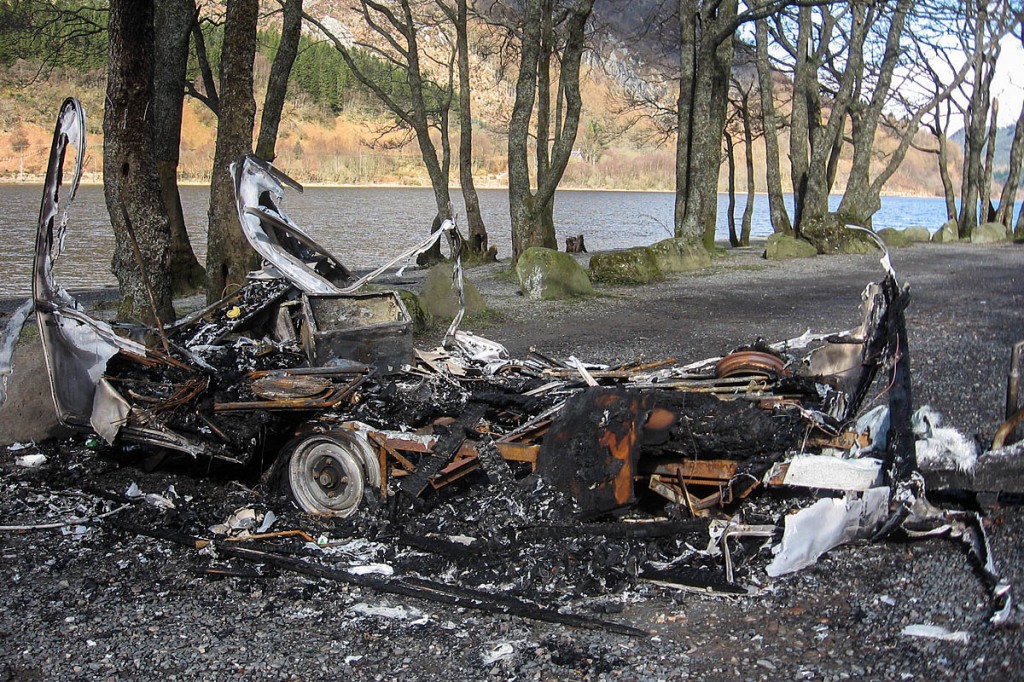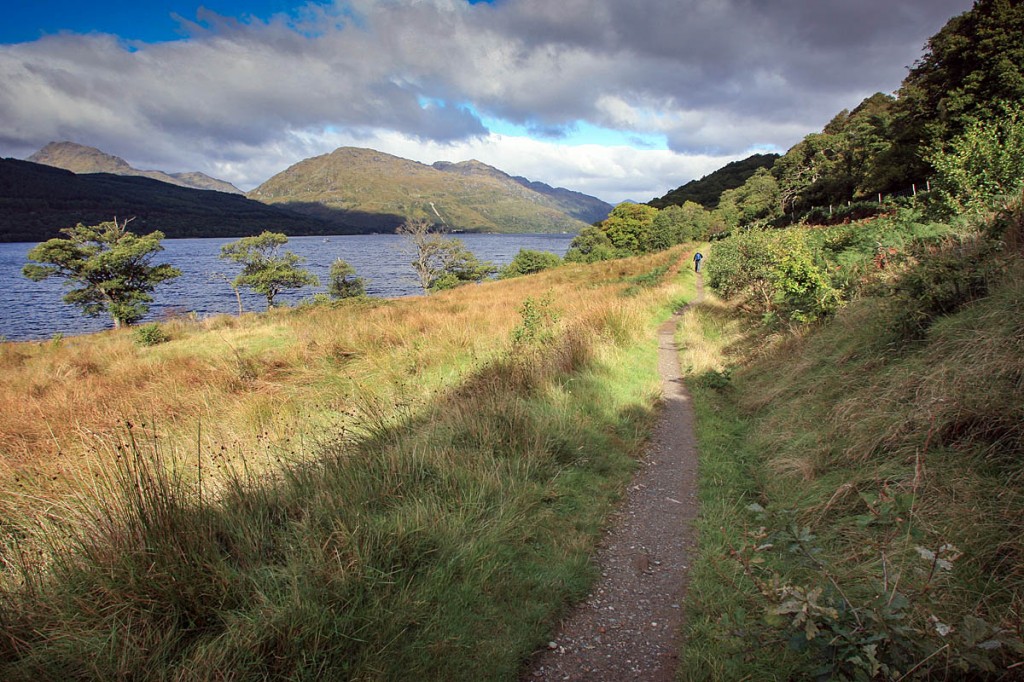National park bosses are recommending the approval of controversial plans to extend the ban on camping along loch shores.
Loch Lomond and the Trossachs National Park Authority managers want to proceed with the proposals despite fewer than half of those who expressed a view favouring the introduction of new bylaws.
Opinion was split during the 12-week consultation, with 49 per cent in favour, 50 per cent against and one per cent neutral.
Those backing the extension of the camping ban include Police Scotland, Forestry Commission Scotland and local councils.
But the Mountaineering Council of Scotland and the Ramblers issued a joint statement calling the plans an erosion of the rights to roam enshrined in the Land Reform (Scotland) Act.
The plans will be put to the national park’s board next week and, if approved, will then need the go-ahead from the Scottish Government.
Loch Lomond and the Trossachs’ plans include the formation of three new ‘management zones’ across the national park, in addition to the existing one along the east shore of Loch Lomond which also extends to Drymen.
The new zones would cover most of the west shore of the loch, as well as part of Glen Falloch and the northern stretches of Loch Long. Another would cover Loch Ard, Loch Chon and Loch Arklet, while in the East of the park, Loch Venachar, Loch Lubnaig, Loch Achray, Loch Voil, Loch Doine and Loch Earn would all have camping restrictions from March to October.
The authority said the area covered was only 3.7 per cent of the national park.
Chief executive Gordon Watson said: “Among the many magnificent landscapes in the national park, the lochs and loch shores stand out as perhaps our most distinctive and memorable natural attractions and, therefore, deserve particular attention and care.
“These proposals recognise our responsibility to promote access and recreation in the park, and take a measured and proportionate approach designed to protect the lochshore environments under threat, while delivering enhanced camping provision.
“These recommendations build on the significant success of the balanced package of measures to tackle the same issues on east Loch Lomond since 2011, as well as years of evidence gathered from ranger patrols and from Operation Ironworks with Police Scotland.”
The authority said it was committed to invest public money in better facilities providing 300 camping places through a mixture of camping permits and low-cost campsites, continued education around responsible camping and promotion of access and recreation opportunities throughout the park.
It said the proposals were developed following increasing evidence that the natural beauty of the park is being severely degraded by the relentless pressure from high volumes of campers visiting the same popular areas every summer – allowing no time for its fragile areas to recover.
In addition, further damage is being caused by irresponsible behaviour of some visitors, it said. This includes littering, using lochshores as a toilet, felling trees for firewood, abandonment of entire campsites and summer-long, unauthorised caravan encampments in laybys with no facilities. All of which has a detrimental impact on local tourism economy.
Mr Watson said: “With its easy-to-reach loch shores among high mountains and along wooded banks the national park has some of the best places to pitch a tent in Scotland.
“However, these spectacular areas can no longer withstand the unmanaged camping activity and further action is required. These proposals seek to achieve the better conservation and protection of our busiest and most heavily used loch shores which experience significant damage and degradation from unmanaged camping every summer.”
Gordon Donaldson, Forestry Commission Scotland’s district manager in the area, said: “We are happy to support the national park authority in its efforts to improve the experience for visitors and reduce the disturbance to local communities and to the environment.
“As the largest single land manager, welcoming visitors to Scotland’s national forest estate is a big part of what we are about and we know very well how high visitor numbers, as well as the irresponsible behaviour of a minority of visitors, can impact the environment and local communities.
“Dealing with these issues in the long term requires a collaborative, adequately resourced and affordable approach and for our part, we will provide agreed sites on the estate that the authority can then develop and manage.”
But the Mountaineering Council of Scotland and Ramblers Scotland said they were disappointed with the recommendations to introduce bylaws to the majority of the easily accessible areas of the national park.
Andrea Partridge, access officer for the MCofS, said: “Many thousands of people will be affected by these proposals, from the climber and walker to touring cyclists and kayakers.
“The Land Reform (Scotland) Act 2003 was a landmark piece of legislation and yet it is being eroded by a national park authority which has a primary aim to promote understanding and enjoyment of the special qualities of the area by the public.
“There is no commitment in the proposals to provide camping facilities before the bylaws are introduced – or to back these up with a rural clearway, alcohol ban and physical closure of the existing areas where people camp. The national park is simply removing the rights of the responsible majority to camp in the ‘management zones’.
“The various documents being presented to the board talk about the problems of litter and toileting and yet the national park authority has not provided facilities for day visitors in these key locations and ‘honeypots’.”
Criticising the consultation process, she said: “Despite 51 per cent of respondents to the consultation opposing the bylaws, the national park has continued to pursue this policy and has ignored many of the comments made.
“Crime figures and statistics that were presented to the public in the consultation have been shown to have been misrepresented and comments from key organisations such as the local access forum have not been included in the consultation report.”
More than 300 responses were received by the authority during its Your Park consultation. More details of these and the recommendations are available on the Loch Lomond and the Trossachs National Park Authority website.




MountainMike
23 April 2015The key to this issue is Education and awareness. Simply put:
Do not bring your Bear Grylls Survival Knives and hatchets, unless you bring the timber to work with.
tracy hawke
25 April 2015I love camping and we always leave the place as we find it. Always keep it tidy and clean. I think that we should have a camping permit pay for it yearly so that if you leave a mess or cause a disturbance you should be banned and have the camping permit taking off you. I can't afford to go abroad so we go wild camping to get away from it all and relax. I think its sad that a beautiful country like Scotland and we are not going to get to enjoy it to its fullest anymore.
Robert Gorman
01 May 2015I have a fishing boat on Loch Lomond and have been camping there for many years. Some of my friends have been doing so for the past forty years.
We respect the Loch and always ensure the areas where we camp are clean and tidy. We put any litter in bin bags and take it away with us.
This has been our way of life. The initial camping restrictions are totally unfair to decent people and I find it hard to understand why the authorities don't make an effort to concentrate on the undesirable people who cause trouble and leave a mess behind them.
Perhaps this is too much for them , or they don’t have the ability, so they ban everyone, or try to herd people in to campsites that are not suitable. It really is a disgrace.
Part of the enjoyment is the feeling of being free to roam and enjoy some of the most beautiful scenery there is. Being on the Loch and looking at the sky at night can be amazing.
Some thought should be given to regular Loch visitors who care for the environment. I think the authorities need to rethink what they are doing and pay attention to people who have known the Loch all their lives, such as the Loch Lomond Association and the Loch Lomond Angling Improvement Association, who spent money, time and effort constructively.
OutdoorsAndy
10 May 2015I like your idea Tracy- it could earn some revenue to allow policing of the offenders. This would seem the route of the problem, as littering etc is a crime, which the authorities have allowed offenders to get away with. Perhaps a high profile crack down would have helleped? Instead of all the time and money spent on meetings about banning all.
To be honest, I have wild camped extensively in England, which of course is banned- but I an subtle is my camp choice and never leave a trace
Don Paterson
19 July 2015I am absolutely disgusted that the national park bosses want to ban everyone from camping on these lochs. Is this the best way forward to let the hooligans win. I have fished and camped on these lochs for years and have always had the utmost respect for the area i'm camping and being able to enjoy scotlands natural beauty at its best. This another attack on law abiding peoples rights i can't believe that the park bosses feel the best way to manage it is stop Scottish people from enjoying the outdoors at a time when outdoor activities are being encouraged. Maybe they should have managed the irresponsible actions and abuse of the people that don't care more effectively, I feel that they should accept some of the blame for allowing the minority to go unchallenged. If this plan goes ahead many of the places i love to go and enjoy responsibly will be no go areas as there won't be any point to travel to these places for a few hours.
The government never gave in to the football hooligans years ago saying that they wouldn't allow the minority to win they didn't ban travelling supporters allthough plenty of people wanted it, they felt it was better to deal with the hooligans directly and not punish the real supporters, thats what they want to do here punish the normal law abiding people, thats who this will affect the most, do you think the hooligans care they will just move somewhere else and be a problem there.
robert small
02 September 2015are you a load to camp at loch earn or what could you replay back please
cheap apartments in istanbul
15 November 2015I have learn a number of superb material below. Undoubtedly price social bookmarking pertaining to revisiting. I'm wondering just how much try out you determine to develop this kind of excellent informative web page.. cheap apartments in istanbul
Davie McCallum
24 March 2016Which loch's are you aloud to camp over night.
As I was planning on coming to loch are next weekend with my friends.